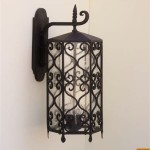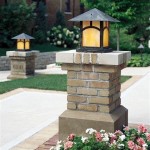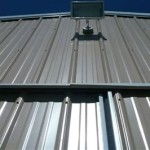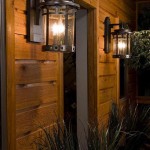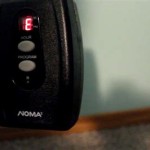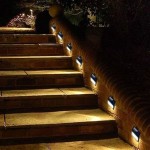How Bright Should Outdoor Lights Be?
Outdoor lighting plays a crucial role in enhancing safety, security, and aesthetics of any property. Whether you are illuminating a walkway, highlighting landscaping, or deterring potential intruders, choosing the right brightness for your outdoor lights is essential. Striking the right balance between functionality and aesthetics requires careful consideration of the purpose of the lighting and the specific needs of your outdoor space.
Factors Affecting Outdoor Light Brightness
Determining the appropriate brightness for outdoor lights is a complex process, and various factors come into play. Some of the key considerations include:
1. Purpose of the Lighting
The primary reason for installing outdoor lights will dictate the required brightness level. For example, safety lighting for walkways or driveways needs to be brighter than decorative lighting for accentuating landscaping. Specific applications for outdoor lighting include:
- Security Lighting: High-brightness lights are essential for deterring crime and providing visibility. Motion sensors can be used to activate these lights only when needed, reducing energy consumption.
- Task Lighting: Bright lights are required for areas where activities like gardening or outdoor dining occur.
- Ambient Lighting: A softer, more diffused light is generally preferred for creating a welcoming ambiance and enhancing the aesthetic appeal of the outdoor space.
- Accent Lighting: Highlighting specific features like trees, statues, or water features requires focused and bright light.
2. Size and Shape of the Area
The size and shape of the area being illuminated will influence the amount of light required. Larger areas will need brighter lights to provide adequate coverage. Similarly, areas with narrow pathways or tight corners may require additional lighting to ensure visibility.
3. Type of Light Fixture
Different types of light fixtures have varying light distribution patterns and brightness levels. For example, floodlights provide a wide beam of light, while spotlights offer a concentrated beam. The type of fixture chosen will influence the required brightness for achieving the desired illumination effect.
4. Surrounding Environment
The surrounding environment can significantly impact the required brightness of outdoor lights. Areas with high ambient light, such as streetlights or nearby buildings, may require less bright lights. Conversely, areas with little ambient light will require brighter lights for adequate visibility.
5. Energy Efficiency
Energy efficiency is a crucial consideration in outdoor lighting as it directly impacts energy consumption and costs. Choosing energy-efficient bulbs, such as LED lights, can offer the same brightness with lower energy consumption.
Measuring Light Brightness
The brightness of outdoor lights is typically measured in lumens. Lumens represent the total amount of light emitted by a light source. Higher lumen ratings correspond to brighter lights. However, lumens alone do not tell the whole story, as the distribution of light also plays a vital role in achieving the desired illumination effect.
Key Considerations for Different Types of Outdoor Lighting
Depending on the specific application and requirements, different brightness levels are recommended for different types of outdoor lighting:
1. Security Lighting
Security lighting typically requires high-brightness levels to illuminate large areas and deter potential intruders. For optimal security lighting, consider using floodlights with a wide beam angle and lumens ranging from 1,000 to 3,000. Motion sensors can be incorporated to activate the lights only when needed, saving energy and preventing unnecessary illumination.
2. Walkway and Pathway Lighting
Walkway lighting needs to be bright enough to provide safe passage but avoid glare and discomfort. Consider using path lights or post lights with lumens ranging from 300 to 600. Choosing warm white or soft white LED bulbs can create a welcoming ambiance without being overly bright.
3. Landscape Lighting
Landscape lighting focuses on highlighting specific features or creating a tranquil ambiance. Using low-voltage landscape lighting with lumens ranging from 100 to 300 can create a soft, diffused light perfect for showcasing plants, trees, or water features.
4. Patio and Deck Lighting
Patio and deck lighting should create a relaxing and inviting atmosphere. Consider using string lights, lanterns, or overhead lights with warm white LED bulbs and lumens ranging from 400 to 800. Warm white LED bulbs emit a warm, inviting glow perfect for creating a cozy ambiance for outdoor gatherings.

Choose The Best Color Temperature For Your Outdoor Lighting Knowledge Base Super Bright Leds

How Bright Should Landscape Lighting Be

How Many Lumens Are Needed For Outdoor Lighting The Home Depot

How Bright Should Your Outdoor Lights Be Kansas City Sprinkler Repair

How Many Lumens Are Needed For Outdoor Lighting The Home Depot

How Bright Should Landscape Lighting Be

How Bright Should My Outdoor Lighting Be

How Bright Should Landscape Lighting Be

Upgrade Your Home S Look Add Security With Exterior Custom Lighting

How Many Lumens Do You Need For Outdoor Lighting Gamasonic Usa
Related Posts
